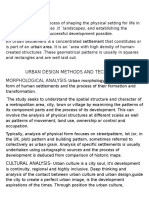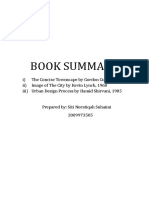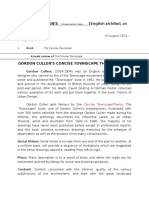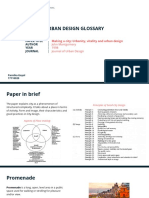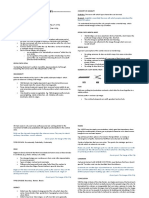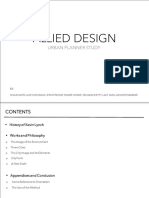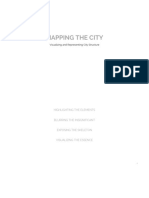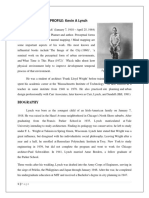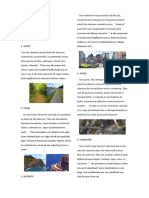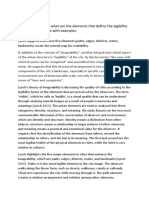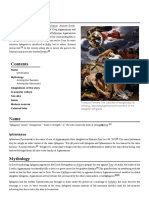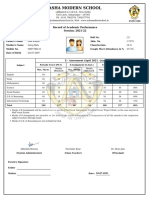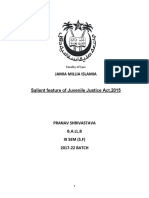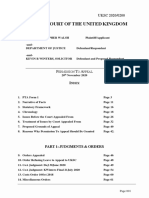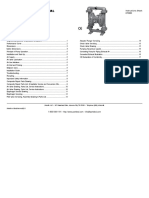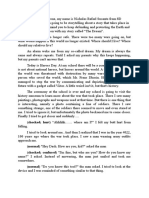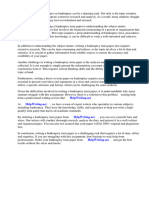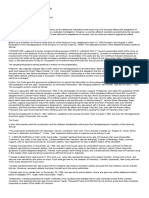0% found this document useful (0 votes)
72 views13 pagesUnit 3: Theorising and Reading Urban Space
Kevin Lynch identified 5 key elements that define an individual's perception of their city: paths, edges, districts, nodes, and landmarks. Gordon Cullen explored the concept of serial vision in understanding urban spaces. Jane Jacobs argued that 4 conditions are needed to generate diversity in a city's streets and districts: mixed primary land uses, short blocks, mingling of old and new buildings, and sufficient density. William Whyte studied what makes some public spaces successful for social life while others are not, such as the importance of "people watching". Jan Gehl categorized outdoor activity as necessary, optional, or social and found this is influenced by environmental quality factors like seating availability.
Uploaded by
antonyCopyright
© © All Rights Reserved
We take content rights seriously. If you suspect this is your content, claim it here.
Available Formats
Download as PDF, TXT or read online on Scribd
0% found this document useful (0 votes)
72 views13 pagesUnit 3: Theorising and Reading Urban Space
Kevin Lynch identified 5 key elements that define an individual's perception of their city: paths, edges, districts, nodes, and landmarks. Gordon Cullen explored the concept of serial vision in understanding urban spaces. Jane Jacobs argued that 4 conditions are needed to generate diversity in a city's streets and districts: mixed primary land uses, short blocks, mingling of old and new buildings, and sufficient density. William Whyte studied what makes some public spaces successful for social life while others are not, such as the importance of "people watching". Jan Gehl categorized outdoor activity as necessary, optional, or social and found this is influenced by environmental quality factors like seating availability.
Uploaded by
antonyCopyright
© © All Rights Reserved
We take content rights seriously. If you suspect this is your content, claim it here.
Available Formats
Download as PDF, TXT or read online on Scribd
/ 13



